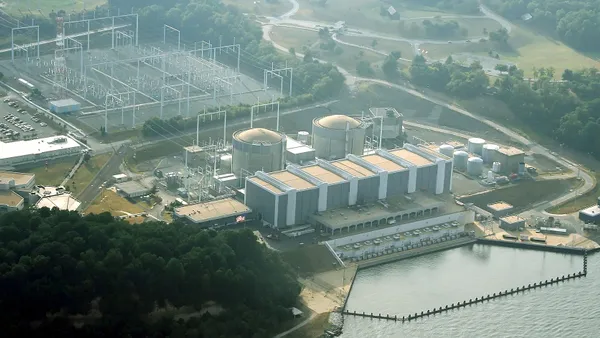Dive Brief:
- The price of carbon in the Northeast's Regional Greenhouse Gas Initiative (RGGI) has taken a tumble since the courts injected uncertainty into the Clean Power Plan's outlook, with prices in the June auction falling to $4.53 per metric ton of CO2 compared with $7.50 in December, a 40% decline.
- Following the Court's decision to delay the implementation of the Clean Power Plan, a subsequent RGGI auction in April saw carbon prices fell to $5.25 per ton, but experts disagree about the direction of where the prices will go from there, Climate Central reports.
- According to the U.S. Energy Information Administration (EIA), RGGI has not set targets beyond the current cap of 78.2 million metric tons of CO2 emission by 2020, "adding to uncertainty about the future value of emissions allowances."
Dive Insight:
Carbon prices in the Northeast peaked in December, just months before the U.S. Supreme Court put the Obama administration's signature climate legislation on hold. But since the decision, prices for emissions credits have fallen and Climate Central questions whether the shift will hold back the region's environmental goals.
“Low RGGI prices hamper the region’s ability to pursue additional carbon cuts,” Jordan Stutt, a clean energy analyst for the Acadia Center, told Climate Central.
But not everyone sees it that way. William Shobe, a University of Virginia public policy professor, told the news outlet that low carbon prices can lead to greater adoption of clean energy policies.
“If you had a choice between high prices and low prices, you’d want low prices because the cost of accomplishing the (carbon cutting) goal is lower,” he said. “That means you’re getting what you want cheaper, and in the end you’ll want to buy more of it.”
The RGGI compact, which includes Connecticut, Delaware, Maine, Maryland, Massachusetts, New Hampshire, New York, Rhode Island, and Vermont, is the first "mandatory market-based program" in the country to reduce emissions, according to the group.
The emissions compact is in the midst of a program review to set the trajectory of the post-2020 cap. According to EIA, some states participating in RGGI already have established CO2 emission reduction targets beyond 2020.
Federal analysts say they expect the Northeast to further reduce its power sector carbon intensity from 1,037 pounds of CO2 per MWh in 2015, to 986 pounds in 2030.















